Cyclax (post 1945)
Continued from: Cyclax (1930-1945)
After 1945, the British arm of Cyclax gradually returned to producing its full product range including perfumes, bath salts, suncreams, depilatories, deodorants, shampoos, hair sprays and hair tints as well as the usual beauty cases, bags and gift packs. The process was hindered by the fact that the Cyclax factory in Tottenham Court Road had been destroyed by German bombing in 1942 and the new factory in Harlow New Town, Essex was not completed until 1953.
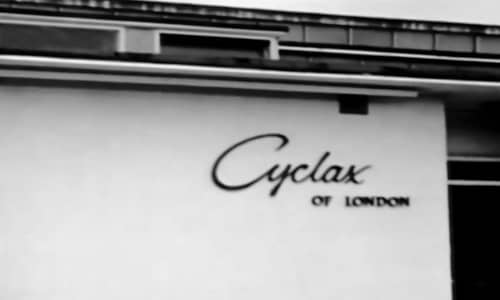
Above: Cyclax of London sign on the side of the factory in Harlow New Town during the 1960s.
Further problems were created by the British economy which went through a post-war austerity period that lasted well into the 1950s. Demand for cosmetics in Britain was further dampened by heavy taxation with the Purchase Tax on cosmetics only being dropped from 90% to 60% in 1958 after strenuous industry lobbying.
Economic conditions outside Europe were better but the Cyclax overseas subsidiaries faced increasing competition from American cosmetic brands that had better financial resources, good access to raw materials, superior research and development programs, and more effective marketing campaigns. Cyclax representatives were accustomed to selling on the basis of quality and value for money, factors that had diminishing appeal as living standards improved in the 1950s. In the British Commonwealth the cachet of British firms like Cyclax and Yardley was also on the decline as the younger generation looked increasingly to America, a trend that was only briefly reversed during the ‘Swinging London’ years of the 1960s.
Skin-care
By 1949, Cyclax had introduced the Cyclax 20-Minute Mask, its first venture into this class of cosmetics. Sold in jars and tubes, the cream appears to have been based on a product used in the Cyclax Mask and Toning Treatment introduced into Cyclax salons in 1939.
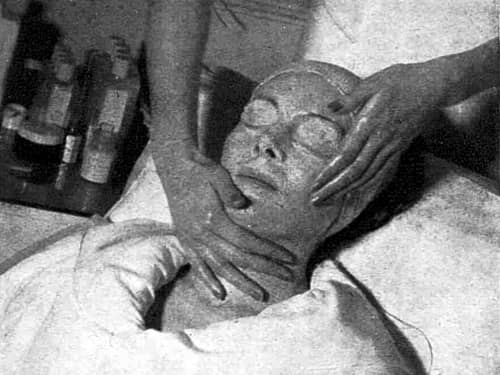
Above: 1948 Cyclax Mask and Toning Treatment.
Descriptions suggest that the 20-Minute Mask contained calamine and an astringent so combined the advantages of Cyclax Special Lotion with a stronger toner. However, being a cream rather than a paint, it would have been a lot easier to apply and remove than Special Lotion.
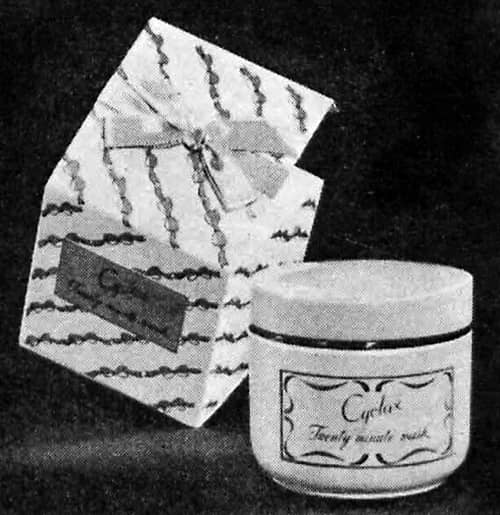
Above: 1949 Cyclax Twenty Minute Mask.
First, mask to free your skin of underlying acid and leave it fresh, clear and petal smooth. Then bracing lotions to give tone and to bring back the elasticity of youth. You’ll emerge into the sunshine full of eagerness for a crowded day—with a skin fresh and clear as the Spring itself!
(Cyclax advertisement, 1939)
In 1953, the company then released Cyclax Extra Nourishing Skin Food (Tissue Cream) – made with additional lanolin – and Cyclax Extra Cleansing Cream, both products that were suited to more mature, drier skin types.
Cyclax Extra Nourishing Skin Food: “This revitalising,
easily-absorbed, rich, nourishing cream will help to restore youthful contours and eradicate ageing lines and wrinkles.”
Cyclax Extra Cleansing Cream: “[L]iquifies instantly on the
skin . . . reconditions while it whisks away surface dirt and impurities, old make-up . . . leaves pores clear and clean, really clean . . . the skin soft, supple, and endowed with a delicate fragrance.”
Other products added to cater for older clients included Cyclax Neckine (1956), made from a mixture of ‘deeply-feeding’ oils, and astringents to ‘brace the muscles’ of the neck and throat, and Cyclax Contorfilm (1962), containing lemon juice to help ‘tone and brace’. Contorfilm was mild enough to be used on sensitive areas around the eyes and could be worn under make-up.
Cyclax Neckline: “Its nourishing oils smooth and soften the dry skin of the neck, prevent ageing creepiness. Its special astringents mould and stimulate the supporting muscles of the jawline.”
Cyclax Contorfilm: “For lined and tired skin. A refreshing cream that recaptures the tender bloom of youth.”
Considering the number of biological ingredients added to skin-care products by French and American firms in the 1950s – such as antibiotics, embryo extracts, hormones, placental extracts and royal jelly – these new Cyclax skin-care cosmetics were decidedly conservative. They stuck to a tried and true path that combined oils and astringents with Cyclax actually guaranteeing that its Cyclax Extra Nourishing Skin Food did not contain hormones. It would not be until the release of Cyclax Eternal Spring (1963) that the company would have a product that professed to contain ‘biogenic stimulators’.
Home treatment
There were a few variations of the Cyclax Home Treatment Regime in the decade after the war but they all involved the use of Cyclax Cleansing Cream or Cleansing Lotion, Cyclax Soap and water, and Cyclax Skin Food or Skin Cream with weekly treatments with Cyclax Special Lotion to ‘draw out deep seated impurities’.
The routine below is for normal skin:
AT NIGHT
Cleanse with Cyclax Cleansing Lotion, or, if you prefer a cream cleanser, use Cyclax Extra Cleansing Cream. This should be followed by an application of Skin Tonic. Massage generously for a few minutes with Cyclax Special “O” Skin Food. Try ro keep your massage movements in an upward and outward direction. Remove the surplus skin food with a tissue or soft towel—it is not necessary to go to bed with your face covered with a skin food.IN THE MORNING
Was with Cyclax Skin Soap and warm water, start the day soap and water clean. Follow with Braceine, which is a skin tonic and deliciously exhilarating. It is used by simply putting a teaspoon in the cold rinsing water; or use Skin Tonic itself, by simply applying it on a pad of cotton wool. Your face in now ready fore the daily make-up.ONCE A WEEK AT NIGHT, SPECIAL LOTION
This deep cleanser should be applied to the face and neck in order to draw impurities from the pores to the surface of the skin. It is important, however, when removing the Special Lotion in the morning to massage for a few minutes with Special “O” Skin Food, and wipe away the Lotion before the morning wash with soap and water.(‘Skin care and loveliness,’ c.1956, p. 3)
Small changes occurred in the regime after the introduction of Cyclax Extra Nourishing Skin Food and Extra Cleansing Cream. Dry skin types then substituted Cyclax Extra Cleansing Cream for the Cleansing Lotion and Extra Nourishing Skin Food for Special “O” Skin Food. Oily skin was to undertake a Cyclax Special Lotion treatment two or three times a week instead of one, with Cyclax Open Pore Lotion suggested for those nights that Special Lotion was not used. Young or Sensitive skin types were to use Special Baby Skin Food as was the case before the war.
Also see the booklet: Skin care and loveliness (c.1956)
Cyclax would continue to use terms like ‘skin food’ and ‘tissue cream’ outside the United States until legislative restrictions on nutritional claims for cosmetics occurred in other advanced economies as well. However, by the 1960s, the moisturiser had become the dominant narrative in skin-care, and skin moisturisation rather than skin nourishment then became the main theme of cosmetic advertising.
Moisturisers
Cyclax Milk of Roses had been doing double duty for many years as a powder base for a ‘natural’ make-up and as a liquid emollient for dry or sensitive hands and skin.
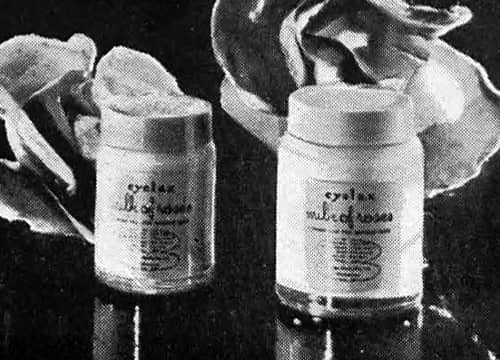
Above: 1949 Cyclax Milk of Roses.
The product was made up of almost 90% water so it is not surprising that it was repurposed as an ‘under make-up moisturiser’ in the 1960s. Other Cyclax cosmetics credited with moisturising properties included Cyclax Emollia (1958), Cyclax Flower Balm (1961), Cyclax Eternal Spring (1963) and Cyclax Moistura (1963). Typically, many of these cosmetics were multipurpose.
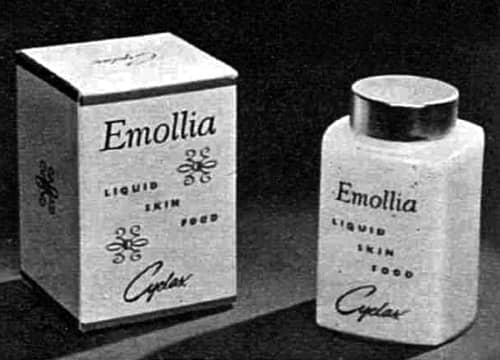
Above: 1958 Cyclax Emollia Liquid Skin Food in white packaging with gold and purple lettering.
Originally introduced as a liquid skin food, Cyclax Emollia was said to be ‘light and extremely soft’ but also ‘richly nourishing’. There are suggestions that it was formulated with silicones to make it non-greasy and it was so fluid that it did not need to be massaged into the skin. Cyclax advised that it could be used at any time of the day or night on skins that were not overly dry.
Cyclax Flower Balm contained cucumber juice and flower extracts to ‘smooth taut muscle lines’ while ‘soothing irritated skin’. Cyclax had used cucumber juice before, most notably in Cyclax Sunburn Lotion, one of the company’s original products. The Flower Balm was later repositioned as a ‘moisturiser freshener’ to help remove the last traces of a cleanser and prepare the skin for an additional moisturiser such as Cyclax Milk of Roses or Cyclax Moistura.
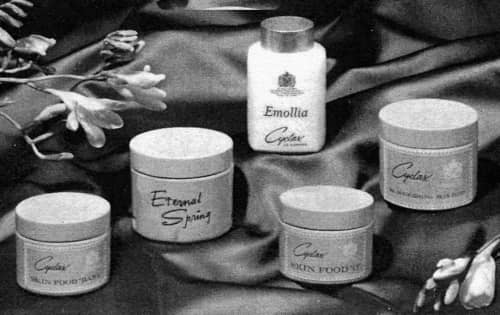
Above: 1966 Cyclax Skin Food Baby, Eternal Spring, Emollia, SkIn Food O, and Extra Nourishing Skin Food. Note the addition of the Royal Warrant Crest.
Although it would be many years before Cyclax gave up on nutritional claims for its cosmetics, Cyclax Eternal Spring and Cyclax Moistura mark the point where moisturising gained ascendency in the marketing of Cyclax skin-care products. The two cosmetics worked as a night and day combination. Eternal Spring was an avocado-green night cream containing avocado oil, vitamins and ‘biogenic stimulators’ while the baby-pink Cyclax Moistura was listed as an extra-moisturising cream that could be used under make-up during the day.
Cyclax Milk of Roses: “[G]ives moisturising protection to every age and type of skin. Wear it under make-up, to guard your complexion all day from wind and weather.”
Cyclax Emollia: “[M]oisturises the face . . . needs no massage, leaves no greasy film.”
Cyclax Flower Balm: “[A] pink, soothing lotion that calms an irritated skin over night or can be used as a colourless foundation when the skin can’t take anything stronger.”
Eternal Spring: “To coax back the bloom into faded complexions; penetrates deeply, absorbs quickly.”
Moistura: “Melts like magic into the pores, restoring lost moisture. Leaves skin soft and glowing.”
In 1967, the Australian arm appears to have introduced a moisturiser called Cyclax Creme Dew with a built in sunscreen. Like Cyclax Emollia Cream it may have been made with a silicone base.
Creme Dew: “[A] delicate, creamy moisturiser (made for summer) and worn under make up … [it] not only protects the complexion from dryness but screens out the sun’s harsher rays – and it’s non greasy!”
Neo Juven
In 1966, Cyclax introduced Cyclax Neo Juven for the Neck, a night cream that combined ‘bio-complex extracts’ with moisturisers to ‘drench dry skins’, emollients to ‘restore radiance and texture’ and astringents to ‘tauten tired tissues’.
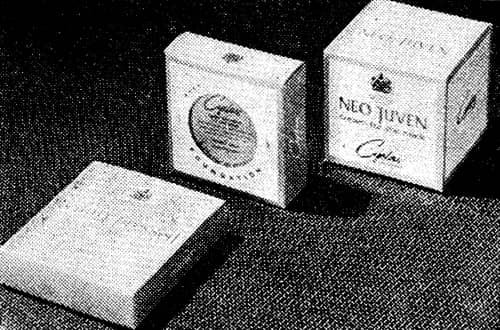
Above: 1966 Cyclax Pressed Powder Foundation and Neo Juven for the Neck in new lilac and gold blocked cartons developed in conjunction with Thomas Preston (Harlow) Ltd.
The company then extended the range adding Cyclax Neo Juven Face Cream (1968), also a night cream, Neo Juven Deep Cleanser (1968) and Neo Juven Day Eye Cream (1969). The two night creams – Neo Juven for the Neck and Neo Juven Face Cream – were both advertised as containing Perceillin and Hexadeconal to ‘help to revitalise and nourish the skin’. Although this sounds impressive I assume it refers to cetyl octanoate and cetyl alcohol, both ingredients commonly found in skin creams.
For the regular Neojuven Beauty Routine use rich, penetrating Deep Cleanser every night to remove all traces of make-up, the apply Neojuven Face Cream and Neck Cream in an upward and outward direction. Both contain Hexadeconal and Perceillin, two ingredients that work together to soften and cherish your skin. In the moring apply Neojuven Day Eye Cream before make-up.
(Cyclax advertisement, 1969)
All these cosmetics were branded as Neo Juven or Neojuven in most parts of the world but in Australia, for some unknown reason, they were sold as Neo Juvex.
Youth Market
In 1947, Cyclax introduced its Debutante Series aimed at younger skin types. There were no new skin-care products in the series but it did indicate that the company was thinking about this market.
The Debutante Series followed skin-care practices that Cyclax had been using for decades: Cyclax Skin Soap and water, and Cyclax Special Lotion to clear acne and other skin blemishes associated with adolescent skin, followed by Cyclax Baby Skin Food to remove the Special Lotion and ‘feed and soothe’ the skin.
Cyclax make a special baby skin food, which is both nourishing and wonderfully soothing to the young skin. They advocate a cleansing cream for removing make-up at night, and a wash with Cyclax skin soap in the morning. For clearing spots and impurities, and treating an acne skin, they have a special lotion, which, applied several nights a week, according to directions, has an amazingly good effect.
(Cyclax advertorial, 1956)
In the United States these three cosmetics were combined with a soft sponge into the Cyclax Blemish Treatment Kit (1954) that could be used by individuals of both sexes who suffered from skin blemishes.
Cyclax skin-care practices for younger skin were not without some merit. Cyclax Skin Soap would have helped remove oil and other detritus from the skin while Cyclax Special Lotion, made with calamine, would have been soothing. However, the skin-care regime was up against an increasing number of medicated skin-care products aimed at this market so the treatment became increasingly obsolete.
Eventually, in the 1960s, the company produced a complete medicated skin-care and make-up range aimed at younger problem skins called Beauty Clear. The range began with Beauty Clear Medicated Lotion and Beauty Clear Medicated Powder in 1963. I note however that although these products were available in the British dominions and the United States I have found no record that they were available in Britain in the 1960s. There, it would seem, the company persisted with the older treatment of Cyclax Skin Soap, Special Lotion and Baby Skin Food.
Beauty Clear Medicated Lotion: “[A] greaseless, clear-golden liquid that is worn under make-up through the day. Antiseptic bacteriostatic Beauty Clear attacks the causes of blemished skin, and its additional protective action continues all through the day. Special additives help soothe irritated skin, aid the healing process, dramatically reduce – eliminate – blemish causing bacteria.”
Beauty Clear Medicated Powder: “[A] superb new formulation combining the Special Beauty Clear additives with the smooth creaminess of a flawless matte make-up. Yet it is so dreamily fragrant you cannot believe it’s medicated. Special medicated oils and additives bring a therapeutic value to make-up. Wonderful for every skin, all complexions – not just blemished ones.”
Later additions to the line were: Beauty Clear Medicated Cleanser, Beauty Clear Medicated Night Cream and Beauty Clear Medicated Foundation (1966); Beauty Clear Spot Mask (1968); and Beauty Clear Anti-Acne Lotion and Beauty Clear Medicated Moisturiser (1970).
I have not been able to determine the medicated ingredient in the early Beauty Clear range but the Beauty Clear Anti-Acne Lotion contained hexachlorophene, allantoin, bio-sulphur and aluminium chlorohydrate so it seems likely that the medicated ingredient used across the range was hexachlorophene and/or bio-sulphur.
See also: Hexachlorophene
Make-up
As the financial returns from make-up continued to accelerate in the post-war period, Cyclax attempted to keep up with trends and developed new formulations as they became fashionable.
Foundations and powders
In the immediate post-war period, Cyclax sold a range of foundations, namely Cyclax Day Lotion, Cyclax Blended Lotion, Cyclax Foundation Cream, Cyclax Morndew Cream and Cyclax Milk of Roses. The Day Lotion, Blended Lotion and Foundation Cream were tinted but the Morndew Cream and Milk of Roses were not.
In 1950, the company reformulated the Foundation Cream and reduced its shade range to two – Peach for blondes and Rose Rachel for brunettes – which were said to tone perfectly with all shades of Cyclax Face Powder. In 1956, the British arm of Cyclax was making this in Naturelle and Rose Rachel.
Cyclax Foundation Cream: “[T]he perfect matt finish foundation for a day-long make-up. On windy days it acts as a protective screen which guards your skin against roughness and dryness.” Shades: Peach and Rose Rachel.
The company discontinued its Cyclax Blended Lotion shortly before it introduced Cyclax GlamOtint, another liquid-cream foundation suitable for all skin types. GlamOtint began its life as Glamour Tint in 1951 but was renamed GlamOtint in 1952, possibly because the former name could not be trademarked.
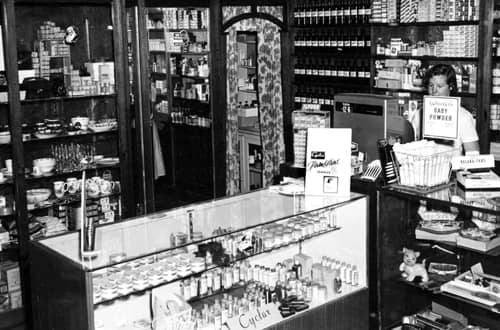
1954 Australian Cyclax counter in a pharmacy in Tallangatta, Victoria with a GlamOtint sign on the counter (Victoria State Library).
GlamOtint: “[T]o give the finishing touch to a radiant complexion.” Shades: Cream Velvet, Rose Velvet, Peach Velvet and Bronze Velvet.
Cyclax increased GlamOtint’s shade range during the decade, adding Pink Velvet (1953), Tan Velvet (1955) and Amber Velvet (1960). The Pink Velvet shade was reputedly worn by Queen Elizabeth II during her Coronation in 1953.
In 1955, GlamOtint was complemented with Cyclax Beauty Pressed Powder which came in a helio-mirrored compact with puff in the same shades as GlamOtint.
Beauty Pressed Powder: “Beautifully light in texture, this is wonderfully clinging; it doesn’t cake, it doesn’t change colour.” Shades: Cream Velvet, Rose Velvet, Peach Velvet, Bronze Velvet, Pink Velvet and Tan Velvet.
The last new foundation added in the 1950s was Cyclax Every Occasion Foundation Cream (1959), an all-purpose, powder-cream foundation in four shades.
Every Occasion Foundation Cream: …[T]he ultimate in-make-up foundation. Smooths on so easily . . . holds powder like a dream . . . so little needed to give you a natural radiance. … always stays colour-true . . . never turns orangey.” Shades: Cream Velvet, Peach Velvet, Rose Velvet and Honey Velvet.
In 1963, in combination with the introduction of its new moisturisers, Cyclax added Beauty Tint which acted as a foundation, face powder and moisturiser all in one. Sold in convenient carry tubes it was recommended for the beach and included a sunscreen for added sun protection.
Beauty Tint: “[B]lends foundation, powder, moisturiser, all in one . . . works miracles of flattery . . . then adds special sun-screens as a final blessing. Stays flawlessly true all day.” Shades: Cream Velvet, Pink Velvet, Peach Velvet, Rose Velvet, Honey Velvet, Bronze Velvet and Tan Velvet.
The product may have been originally developed for the Australian market as it does not seem to have reached Britain until 1965 where it was sold in a different shade range – Sun Lover, Tawny Gold, Apricot Pink, Sunny Beige and Bronze Magic, with Beige Velvet added in 1969.
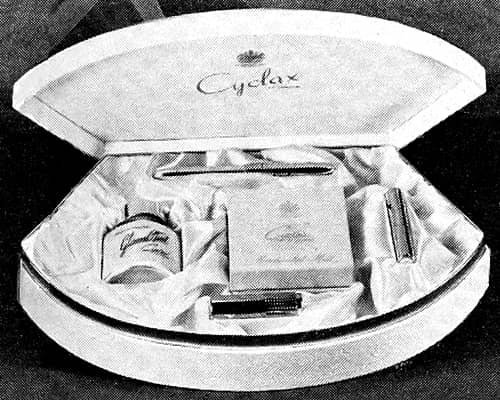
1962 Cyclax Make-up Box containing a bottle of GlamOtint and a box of Enchanted Mist Face Powder as well as a gilt Cyclax Automascara, Lipstick and Eyeshadow.
Cyclax continued to sell loose face powders all though this period. As was the case before the war these came in two forms, one light (Superfine) and one slightly heavier (Standard). By 1956, the lighter powder was being sold as Cyclax Enchanted Mist Face Powder in shades such as Pink Rose, True Pink, Regency Pink, Rachel Rose, Ripe Peach and Midsummer while the heavier Cyclax Standard Face Power was in shades like Magnolia, Naturelle, Honey Glow, English Rose, Pink Mist, Pink Velvet, Peach and Rose Rachel.
Lipsticks
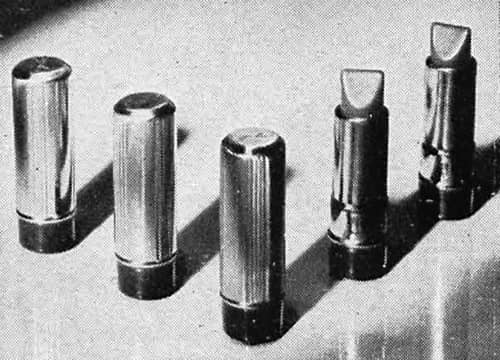
1949 Cyclax De Luxe Lipsticks. These were introduced before the war.
Cyclax added new lipstick shades such as Gay Morning (1947), Red Glory (1950) after the war before introducing Cyclax Colour-Cling, a new indelible lipstick. The new lipstick contained ‘Durabase’ a proprietary ingredient said to allow the lipstick to ‘combine indelibility with creaminess’. Unlike earlier Cyclax lipsticks, Colour-Cling was moulded into a modern bullet shape rather than a chisel and it came in a newly-designed, refillable, gilt case.
Colour-Cling: ‘[W]ill remain unfading during the longest, most tiring day.” Shades: Pink Clover, Night Fuchsia, Brilliant, Velvet Grape, Victoria, Marigold, Prudence, English Petunia, English Rose, Festive Pink and Balmoral.
Additional shades such as Poinciana and Bermuda Pink (1954) were added to Colour-Cling before the company introduced Cyclax Colour-Creme, another indelible, in 1956.
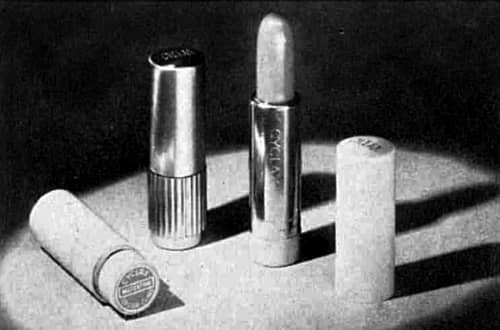
Above: 1959 Cyclax Color-Creme lipsticks.
Cyclax Colour-Creme: “[S]imply g-l-i-d-e-s on . . . never smears . . . feels so natural you hardly know you’re wearing it.” Shades: Pink Suits You, Pink with a Dash, Orchids for You, Coral is Catching, Make Hay, Let’s Go Crazy, Red as you Like, and Sophistication.
Other shades added to the Colour-Creme range included Rose Cha Cha, Summer Punch and Here Goes.
In 1964, Cyclax went on to introduce a third lipstick, Cyclax Colour Clear. This slightly larger lipstick was also produced in refillable cases.
Cyclax Colour Clear: “Not just new shades but a new formula. Creamy. Tender-textured. Moist every moment you wear it to guard against dryness, with safeguards for sensitive lips.” Shades: Downbeat, Coral Viva, Fanfare, Laced Coffee, Daydream, Sunburst, Spun Sugar, Rave Pink, Elegance, Pink Julep and Pink With Love.
Eye make-up
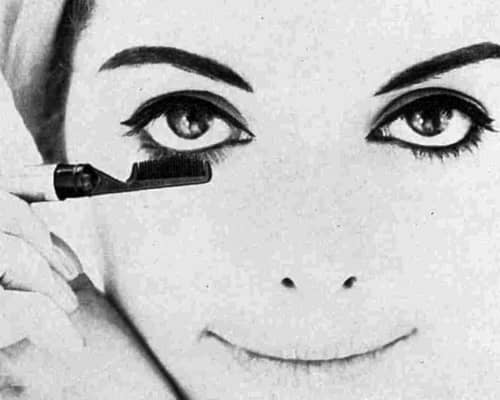
Above: 1961 Cyclax Automascara which combined a spiral applicator with a tiny comb for eye brow and lash grooming, a version also used by Aziza.
Information of Cyclax eye make-up during this period is largely absent. However, by 1960, along with an Eye liner, Eye Liner Brush, Stick Eye Shadow, Pan Eye shadow eye Pencil and Mascara Compact, Cyclax had introduced its Automascara.
See also: Automatic Mascara
Men’s line
Like many other companies, Cyclax developed a men’s toiletries line to try to capture some of this developing market. A Men’s Division was opened at 65 South Molton Street, London and, in 1958, the company released the Cyclax Mainly for Men range made up of Mainly for Men Cologne, Tonic Hair Lotion, Pre-electric Shave, After Shave Lotion, Bath Talc, Invisible Talc, Shampoo, Spray Deodorant and Lather Brush-less Shave Soap.
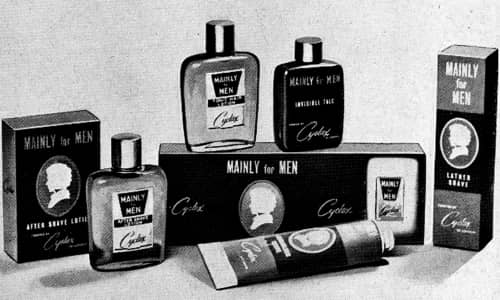
Above: 1958 Mainly for Men. The outer packaging designed by Shirley & Warbey Box Co., Ltd., Colliers Wood, London, incorporated a cameo profile of a Regency gentleman silhouetted in white against a light blue background which contrasted with the overall colour scheme of royal and light blues, with white and gold text.
The range appears to have been restricted to Britain. Australia introduced something similar in its Talisman line but I can find no trace of a Cyclax men’s range being offered in the United States.
Royal warrant
The company’s relationship with the crown began when Queen Elizabeth, the Queen mother, agreed to engage a Cyclax representative, Thelma Holland [1910-1995], to become the royal cosmetician and beauty advisor.
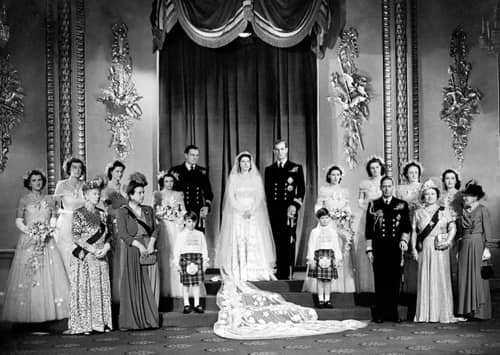
Above: 1947 Royal wedding of Princess Elizabeth and Philip Mountbatten, the Duke of Edinburgh.
Princess Elizabeth was reputed to have worn Cyclax English Rose Lipstick and Rouge on her wedding day in 1947. The shade was first introduced in 1939 just before the war. Thelma Holland, was also the make-up consultant for the Coronation in 1953. The relationship resulted in the Crown issuing a Royal Warrant of Appointment to Cyclax in 1961, an important advertising advantage for Cyclax as many Commonwealth customers took note of what skin-care and make-up Elizabeth used.
See also: Coronation Cosmetics
Sale
In 1970, Cyclax was acquired by Lehman Brothers, Inc. on behalf of a group of private investors. The four Cyclax businesses (Australia, South Africa, New Zealand and Britain) continued to operate as subsidiaries of Cyclax London International which was itself placed under the control of Cyclax Ltd., a U.S. holding company.
Following its acquisition, the salon in South Molton Street was closed and the number of Cyclax outlets in Britain was cut back from near 1000 to 800 with an emphasis on selling through department stores and Boots the Chemist.
The entire Cyclax product range was examined and the number of products was almost by half. Conflicts between some lines were resolved, confusing names were removed. The new owners put their faith in the Neojuven range introduced in 1966 and the number of products in its range was increased.
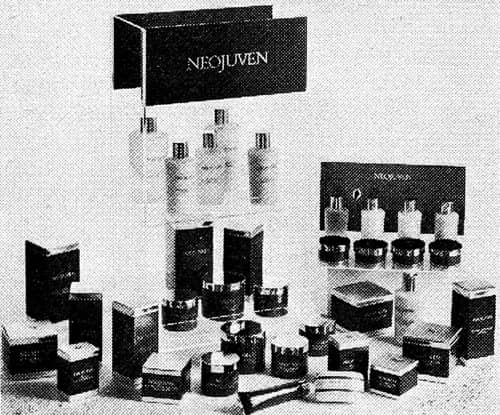
Above: 1971 Cyclax Neojuven repackaged in a clean, hard-edged look in purple and silver designed by Unimark.
Having refurbished the line, the private investment group sold Cyclax to Cooper Laboratories in 1973. The following year, after deciding to concentrate on pharmaceuticals and dental products, Cooper Laboratories sold Cyclax to British American Cosmetics (BAC), a subsidiary of British American Tobacco (BAT), for about US$4 million. In 1985, after a management change at BAT the new board announced they were going back to concentrating on tobacco and BAT sold all its cosmetic interests to Beecham.
In 1989, Beecham merged with SmithKIine Beckman to form SmithKIine Beecham. As with BAT, the new entity later chose to concentrate on its core business, which was also pharmaceuticals, and sold their cosmetics assets, including Cyclax, to a U.S. investment group, Old Bond Street Corporation in 1990, who then on-sold it to International Classic Brands (ICB) in 1994.
ICB went into receivership in 1998 and its assets were split up. Cyclax was bought by Richards & Appleby Ltd. who continued the brand through to 2018 when it was sold to Three Pears who then relaunched the brand.
Timeline
| 1951 | New Products: Glamour Tint (GlamOtint); and Colour-Cling Lipsticks. |
| 1953 | New Cyclax factory completed in Harlow New Town, Essex. |
| 1955 | New Products: Beauty Pressed Powder. |
| 1956 | New Products: Neckline; and Colour-Creme Lipsticks. |
| 1958 | New Products: Emollia Skin Food; and Mainly for Men range. |
| 1959 | New Products: Every Occasion Foundation. |
| 1962 | New Products: Contorfilm. |
| 1963 | New Products: Eternal Spring; Moistura; Beauty Clear Medicated Lotion; Beauty Clear Medicated Powder; and Beauty Tint. |
| 1966 | New Products: Beauty Clear Medicated Cleanser; Beauty Clear Medicated Night Cream; Beauty Clear Medicated Foundation; Neo Juven for the Neck; and Colour Clear Lipsticks. |
| 1968 | New Products: Beauty Clear Spot Mask; Neo Juven Face Cream; and Neo Juven Deep Cleanser. |
| 1969 | New Products: Neo Juven Day Eye Cream. |
| 1970 | Cyclax acquired by Lehman Brothers on behalf of private investors. Salon in South Molton Street closed. New Products: Beauty Clear Anti-Acne Lotion; and Beauty Clear Medicated Moisturiser. |
| 1973 | Cyclax sold to Cooper Laboratories, Inc. |
| 1974 | Cyclax acquired by British American Cosmetics (BAC). |
| 1984 | British American Cosmetics sold to Beecham. |
| 1989 | Beecham merges with SmithKline to form SmithKline Beecham. |
| 1990 | SmithKline Beecham and sells its Yardley-Lenthéric cosmetics group (including Cyclax) to the investor group Wasserstein Perella to be operated through the Old Bond Street Corporation. |
| 1994 | Yardley, Lenthéric, Morny and Cyclax sold to International Classic Brands. |
| 1998 | International Classic Brands goes into receivership. |
| 1999 | Cyclax purchased by Richards & Appleby Ltd. |
| 2018 | Cyclax sold to Three Pears International Wholesale. |
First Posted: 12th March 2011
Last Update: 2nd November 2020
Sources
The chemist and druggist. (1859-) London: Morgan Brothers.
The Forsythe saga. (1971, October, 5). The Times, p. 13.
Gunn, F. (1973). The artificial face: A history of cosmetics. London: David & Charles.
Manufacturing chemist. (1937-2012). London: Miller Freeman [etc.].
Perfumery and essential oil record. (1910-1969). London: G. Street & Co., Ltd.
Skin care and loveliness (c. 1956). [Booklet]. London: Cyclax of London.
SPC. Soap, perfumery & cosmetics. (1935-1970). London: London Trade Press Ltd.
Wykes-Joyce, M. (1961). Cosmetics and adornment: Ancient and contemporary usage. London: Peter Owen.
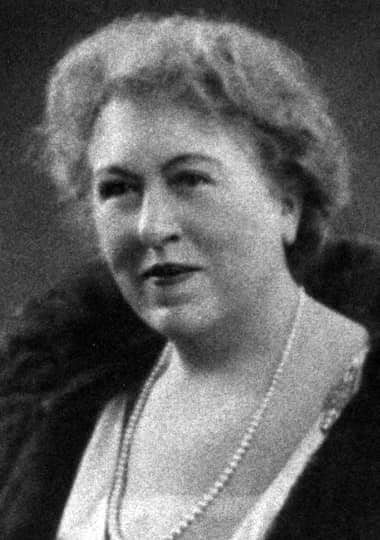
Frances (Fanny) Lester [1872-1934], née Frances Forsythe, née Frances Hamilton, a.k.a. Mrs. Frances Hemming. This photograph was taken in 1922.
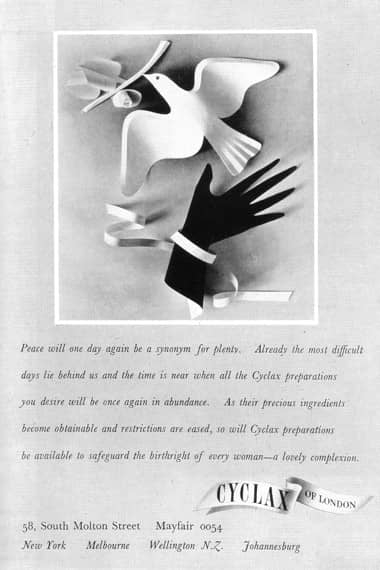
1945 Cyclax of London peace message.
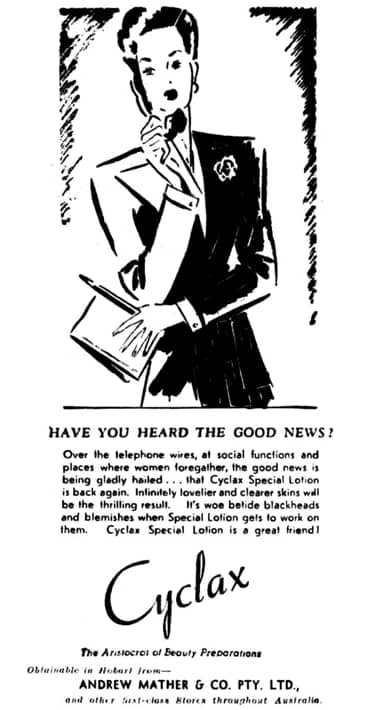
1945 Cyclax Special Lotion back in circulation in Australia after the war.
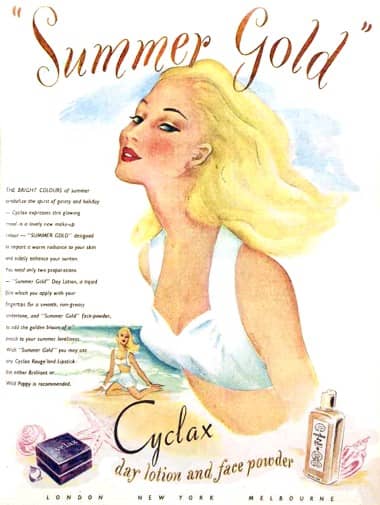
1946 Cyclax Summer Gold Day Lotion and Face Powder. Cyclax recommended Brilliant or Wild Poppy shades of lipstick and rouge to go with it (Australia).
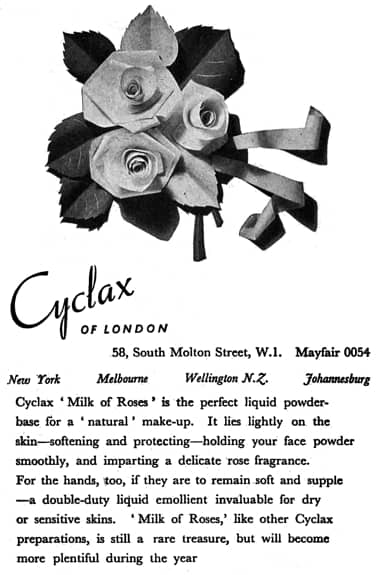
1946 Cyclax Milk of Roses.
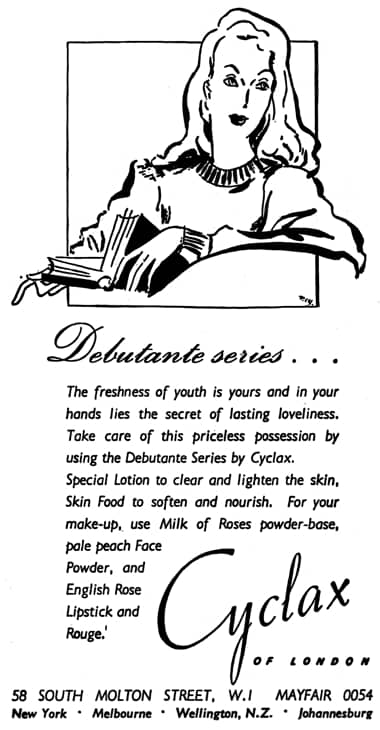
1947 Cyclax Debutante Series. Cyclax Special Lotion, Skin Food, Milk of Roses, Pale Peach Face Powder and English Rose Lipstick and Rouge.
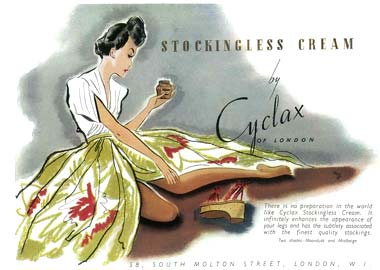
1948 Cyclax Stockingless Cream. Postwar austerity in Britain meant that it continued to be sold well into the 1950s.

1948 Cyclax Foundation Cream.
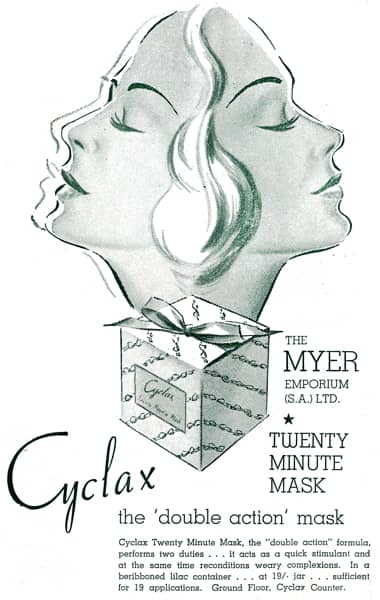
1949 Cyclax 20-Minute Mask (Australia).
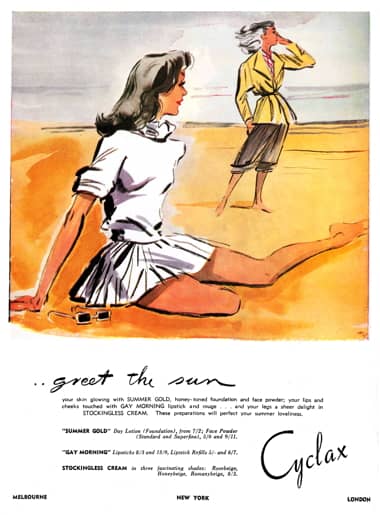
1949 Cyclax Summer Gold Day Lotion, Gay Morning Lipstick and Stockingless Cream (Australia).
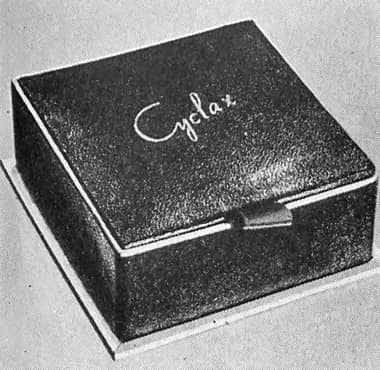
1949 Cyclax Face Powder, reformulated and packaged in a new, larger royal purple box.
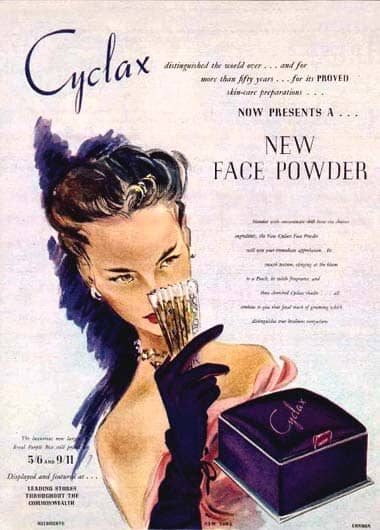
1949 Cyclax Face Powder (Australia).
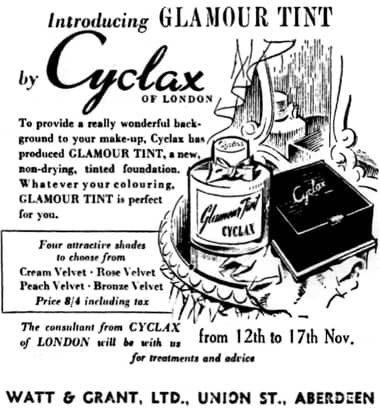
1951 Cyclax Glamour Tint Foundation.
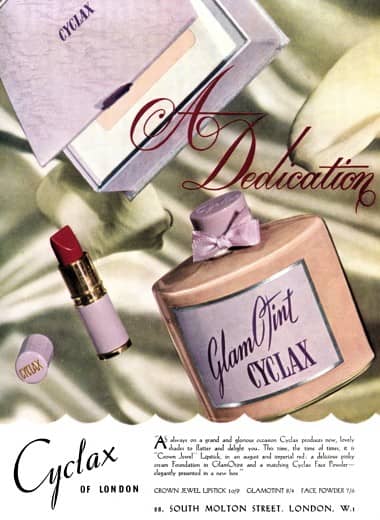
1953 Cyclax Crown Jewel Lipstick, Pink Velvet Face Powder and Pink Velvet GlamOtint Foundation.
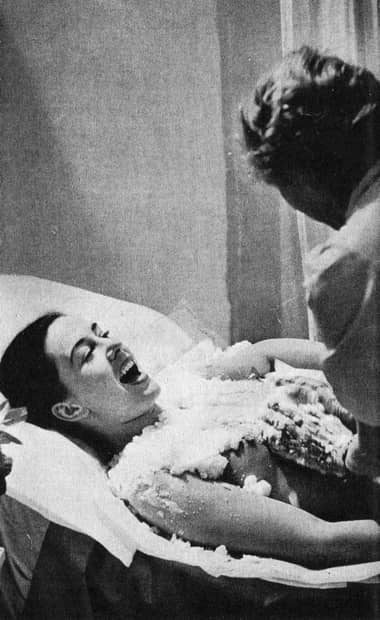
1952 Cyclax wax bath, part of a weight reduction treatment. It was followed by a full body oil massage.
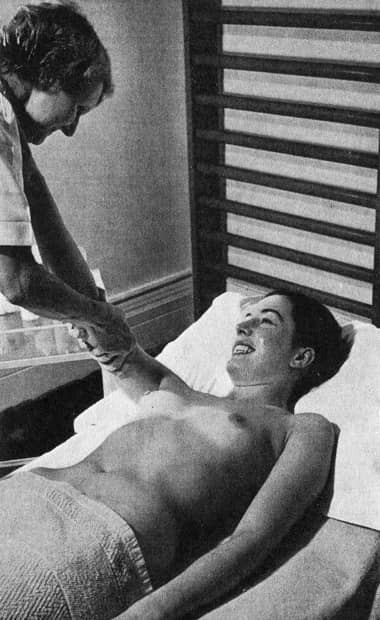
1952 Cyclax salon full body oil massage. A set of exercise bars can be seen in the background.
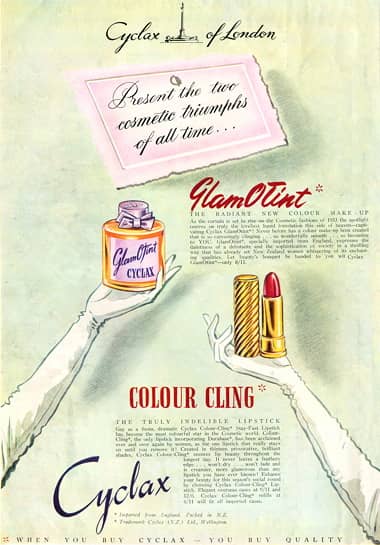
1953 Cyclax GlamOtint and Cyclax Colour-Cling Lipsticks (New Zealand).
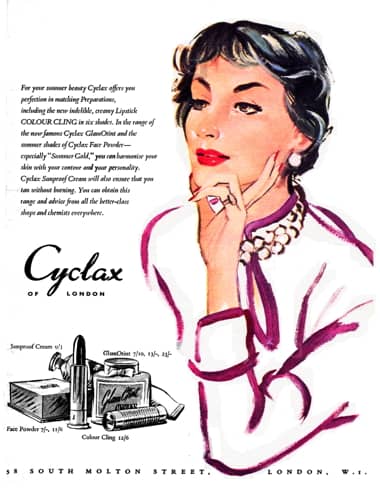
1954 Cyclax Colour-Cling Lipsticks.
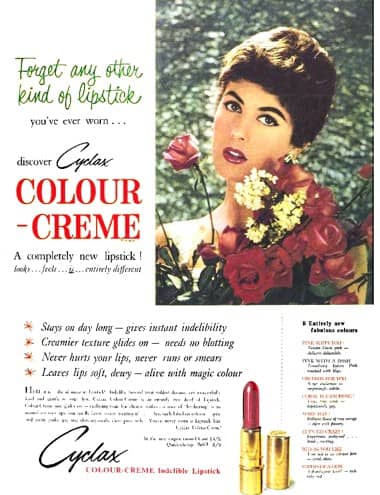
1956 Cyclax Colour-Creme Indelible Lipstick (Australia).
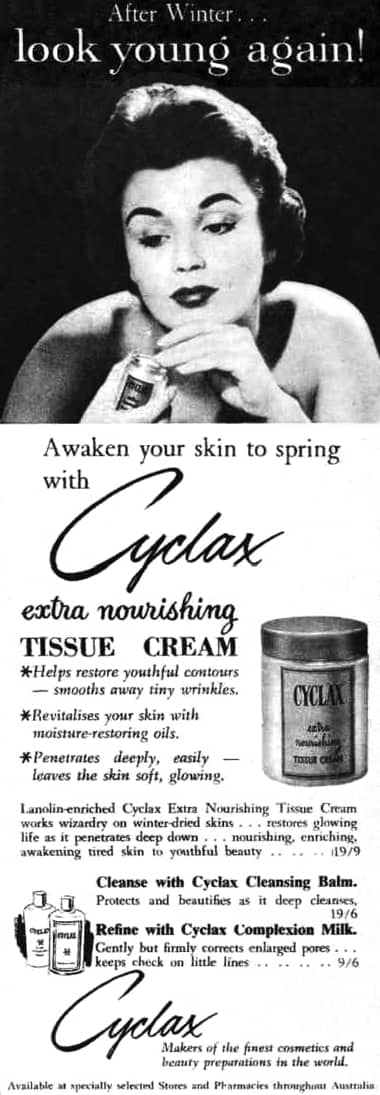
1956 Cyclax Extra Nourishing Tissue Cream (Australia).
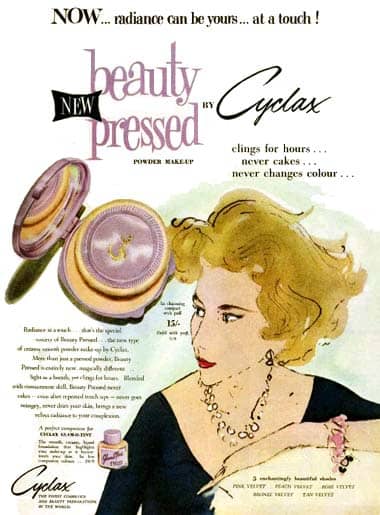
1956 Cyclax Beauty Pressed Compact Powder (Australia).
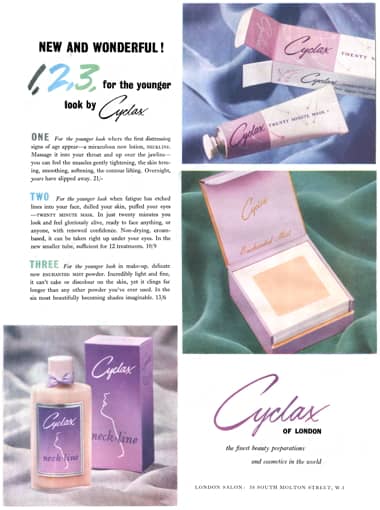
1956 Cyclax Neckline.
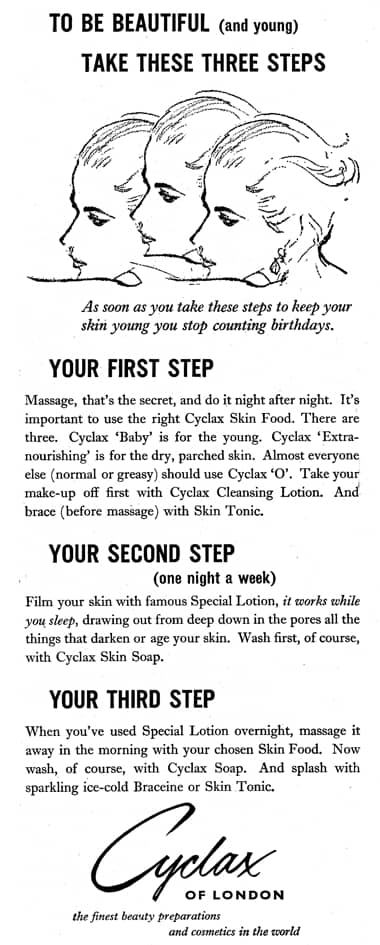
1958 Cyclax three step routine.
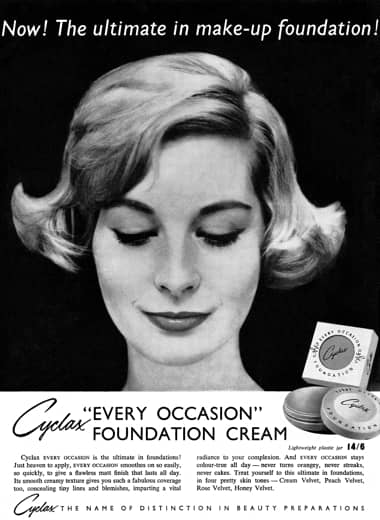
1960 Cyclax Every Occasion Foundation Cream.
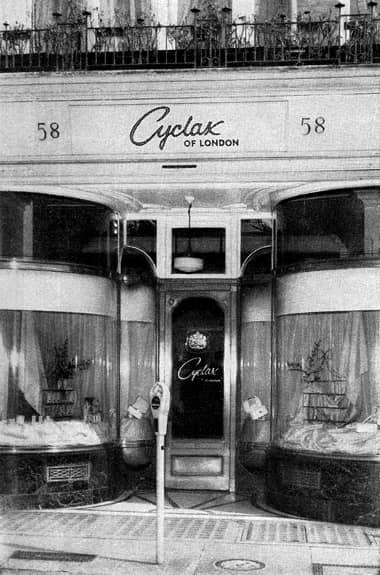
1961 Cyclax salon in South Molton Street. The curved widows may have been installed in 1934 when the salon was refurbished.
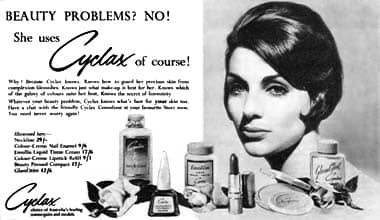
1961 Cyclax Neckline, Colour-Creme Nail Enamel, Emollia Liquid Tissue Cream, Colour Creme Lipstick Refill, Beauty Pressed Compact and GlamOtint.
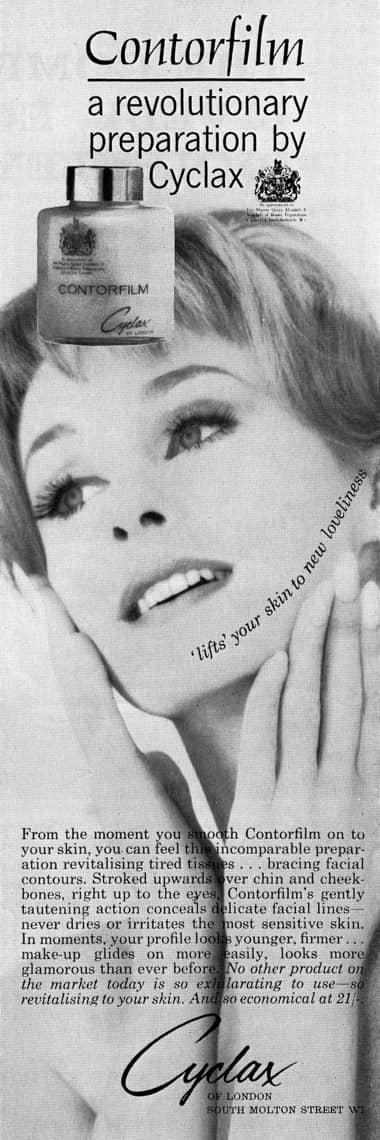
1962 Cyclax Contorfilm
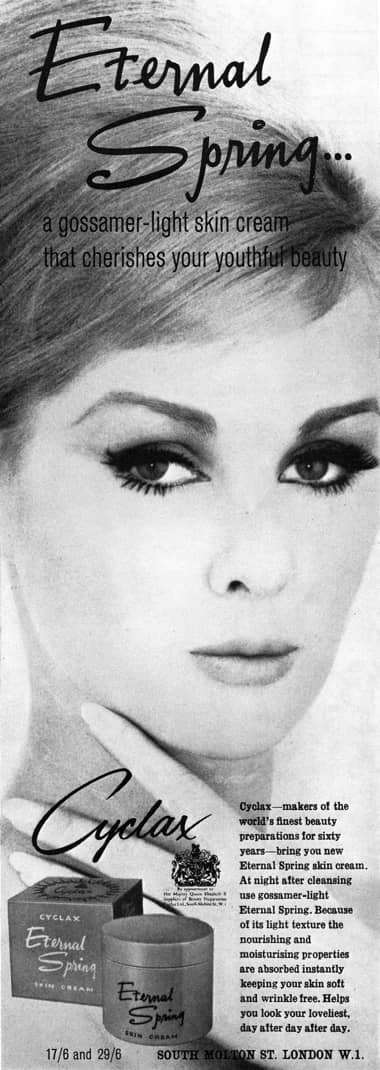
1963 Cyclax Eternal Spring.
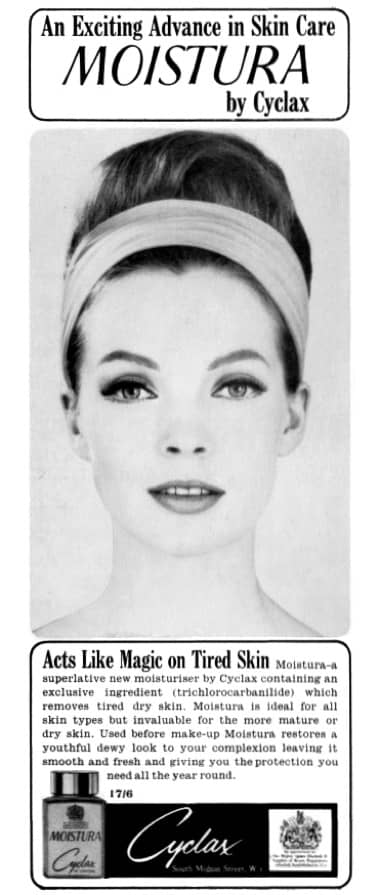
1964 Cyclax Moistura.
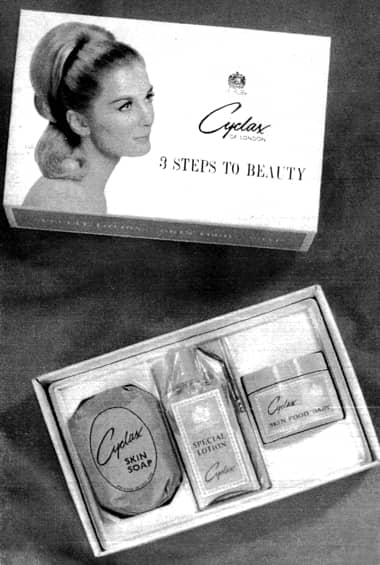
1964 Cyclax Three Steps to Beauty Pack for younger skin types consisting of Cyclax Skin Soap, Cyclax Special Lotion and Cyclax Baby Skin Food.
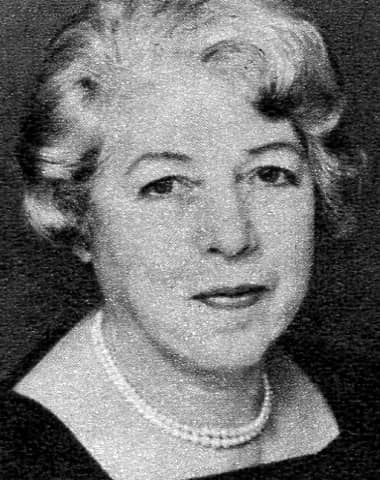
1967 Elizabeth M. Forsythe (Director of Cyclax).
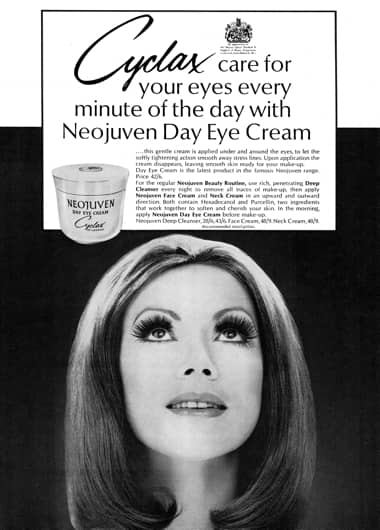
1969 Cyclax Neojuven Day Eye Cream.
